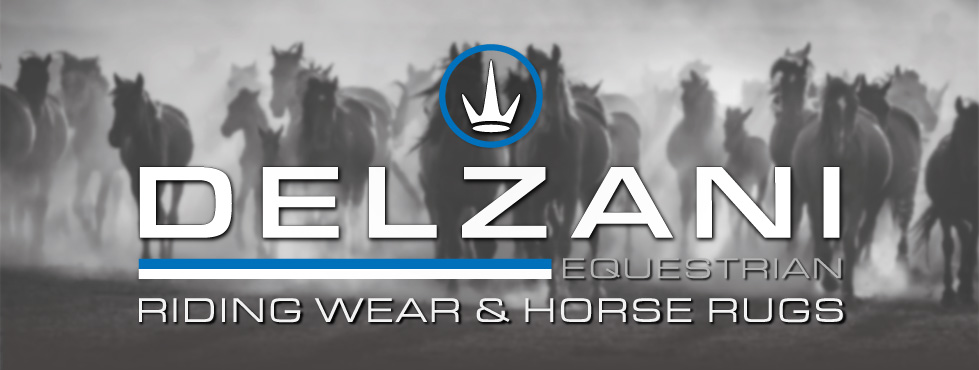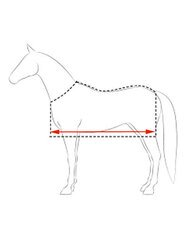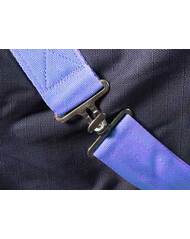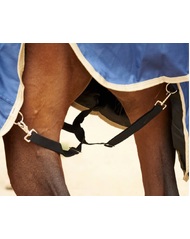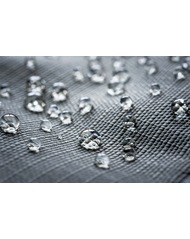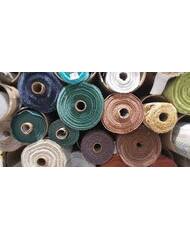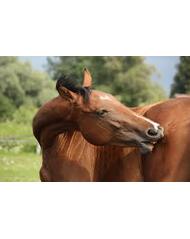Understanding Denier: The Key Differences Between 600D and 1200D Turnout Rugs

600D vs 1200D Horse Rugs: Which Rainsheet is Best for Your Horse?
Updated September 2025
Struggling to choose between 600D and 1200D? This complete guide explains what denier really means, how it impacts durability, what it doesn’t affect (like warmth), and how waterproofing, breathability, and care influence your horse’s comfort.
In the Delzani range: Waratah is our 600D rainsheet line, and Wyndham is our 1200D rainsheet line.
What is “Denier” in Horse Rugs?
When you see 600D or 1200D on a horse rug, the “D” stands for denier a measurement of the thickness and strength of the individual fibres that make up the outer fabric.
Think of it like the difference between threads in clothing: a fine silk shirt has very thin fibres, while a heavy-duty canvas bag has much thicker ones. The same applies to horse rugs:
- 600D (Waratah): Mid-weight fibres, giving a lighter, more flexible rug that still offers good strength for everyday turnout.
- 1200D (Wyndham): Heavier fibres, woven more densely to create a tougher fabric that stands up better to rough play, biting, and abrasive paddock conditions.
It’s important to note that denier measures fabric toughness, not warmth or waterproofing. A 600D rug and a 1200D rug will perform the same in terms of waterproofing and insulation those features depend on the rug’s membrane and fill, not the outer fabric.
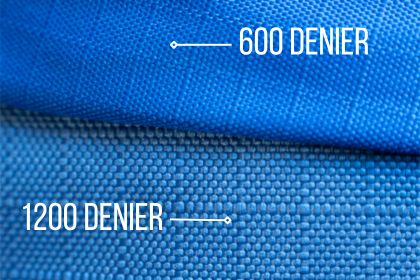
600D vs 1200D Horse Rugs: Key Differences
600D (Waratah) Rainsheet
- Feel: Light and flexible, less bulk
- Durability: Strong ripstop fabric, suitable for everyday turnout
- Waterproofing: Uses the same membrane system as 1200D denier does not affect waterproofing
- Warmth: Denier does not affect warmth insulation depends entirely on fill weight (if any)
- Price: More economical choice
- Best for: Everyday turnout, horses who are easy on their rugs, value-focused buyers
1200D (Wyndham) Rainsheet
- Feel: Heavier outer, slightly stiffer when new, softens with use
- Durability: Extra abrasion resistance and tear strength
- Waterproofing: Same advanced membrane as 600D denier does not affect waterproofing
- Warmth: Denier does not affect warmth insulation depends entirely on fill weight (if any)
- Price: Higher due to denser, more robust fabric
- Best for: High-activity horses, horses who are hard on their rugs
Waterproofing & Breathability: What Denier Doesn’t Change
Whether you choose 600D or 1200D, both rely on the same waterproof membrane system. The denier number affects the outer fabric strength, not the waterproofing performance or warmth. Both options in the Delzani range exceed industry standards for waterproofing and breathability, ensuring your horse stays comfortable in wet conditions.
For a detailed explanation including how waterproofing works, how to test your rug, and what can affect long-term performance please see our full guide: Understanding Horse Rug Waterproofing.
How to Choose Between 600D and 1200D
- Everyday turnout horses easy on their rugs: Choose Waratah (600D).
- Rough paddocks & horses hard on their rugs: Choose Wyndham (1200D).
- Warm climate: Waratah (600D) is lighter and more flexible.
- Cold/windy or abrasive conditions: Wyndham (1200D) is more resilient.
- Budget: Waratah (600D) is more economical; Wyndham (1200D) offers maximum outer strength.
Choosing between Waratah (600D) and Wyndham (1200D) comes down to your horse’s behaviour, paddock environment, climate, and budget. Both offer Delzani’s trusted waterproofing and breathability. If in doubt, contact our team and we’ll help guide you to the best choice for your horse.
Why GSM Matters in Denier Fabrics
Not all horse rugs are created equal. Some importers cut corners by using a lighter GSM (grams per square metre) fabric while still advertising the same denier rating. On paper, a rug might look like a true 1200D, but if the GSM has been dropped, the fabric is thinner and won’t stand up to the same level of wear and tear.
Traditionally, a quality 1200D rug should be around 370gsm. However, we’re now seeing many so-called 1200D or even 1680D rugs being made with as little as 300gsm. To the eye, they look the same – but in reality they’re up to 20% thinner, meaning less strength and reduced durability.
At Delzani, we don’t cut those corners. Our Waratah (600D) and Wyndham (1200D) ranges are built to the proper GSM weights, giving you rugs that are tough, reliable, and built for Australian conditions.
Browse Delzani Rainsheets | Shop Waratah (600D) | Shop Wyndham (1200D)
Written by Jane Griffiths - An experienced Australian horse owner and product developer with over three decades immersed in equestrian life. Jane has spent years refining horse rugs, tack, and riding apparel to better suit Australian climates. She has enjoyed countless weekends at gymkhanas, show jumping events, and pony club competitions with her daughter, and still loves hitting the trails with friends whenever she can. Her lifelong passion for horses and hands-on understanding of equine comfort continue to shape her practical, rider-first approach to horse care and product design.
Leave a comment
Related Equestrian Guides
Delzani Horse Rug Sizing Guide
We have put together this comprehensive guide to help you purchase the ideal size Delzani horse rug.
Waterproof Horse Rugs & Winter Turnouts
Keep your horse cozy and dry during rainy and cold winter weather with Delzani's waterproof turnout horse rugs. Designed for comfort and warmth, our rugs provide reliable protection against harsh weather conditions. Shop now!
How to fit & adjust horse rug belly surcingles
Belly surcingles keep horse rugs secure, but only if fitted correctly. We answer common questions on what surcingles do, why they matter, and how proper adjustment ensures comfort, safety, and longer rug life for horses in Australian conditions.
Wash Guide - Horse Rugs
To get the best life from your Delzani horse rug, taking a few simple washing precautions will go along way.
Understanding your horse rugs waterproofing
Learn how horse rug waterproofing and breathability really work, why membranes matter more than fabric, and how to test, care for, and choose rainsheets. Explore Delzani’s 600D Waratah and 1200D Wyndham rugs, built for tough Australian conditions.
A Guide to Delzani Horse Rug Fabrics
Managing and Preventing Queensland Itch in Horses
Banish the Itch: Managing and Preventing Queensland Itch in Horses
Horse Rug Insulation Guide: Choosing the Right Polyfill Weight
Learn how to choose the right polyfill weight for your horse rug. Compare 100g, 200g, and 300g insulation options and discover what suits your horse best. Delzani’s expert guide helps you select the perfect winter rug for Australian conditions.
Preventing Shoulder Rubs in Horses: Why Shoulder Guards Make a Difference
Protect your horse’s shoulders before rubs start - learn why they happen, how to prevent them, and why Australian riders trust Delzani Shoulder Guards to keep coats glossy, comfortable and show-ready all year round.

